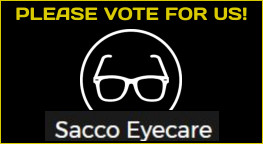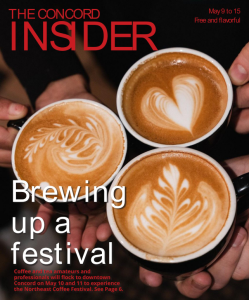Have you always wanted to make your own wine but didn’t want to get your feet all grape stained? Well, thanks to Vintner’s Cellar Winery, 133 Loudon Road, you can make your own wine without traveling to California or Italy and keep your shoes on. How do you like them grapes?
Last Wednesday, Katie and I met with owners Larry Crossley and Virginia Fressola for a little pre-noon wine tasting and to make our very own wine. I would describe Vintner’s Cellar as a hidden gem in Concord. Granted, it’s not exactly “hidden,” being located in a high-traffic area on Loudon Road, but once you’re inside the winery at Lamplighter Plaza, you don’t quite feel like you’re in a strip mall across from Papa Gino’s anymore. (No offense to Papa Gino’s – we heart your speedy and affordable lunch deals.)
Vintner’s interior somehow manages to be both chic and quaint at the same time, and smells of wine immediately when you open the door. And I mean that in a good way – it doesn’t smell like your crazy aunt who gets a little too tipsy at family gatherings. Instead, the smells makes you want to pop open a bottle, buy a block of cheese and have a lovely picnic in the park.
What’s inside
Once you’re done taking in the winery’s smells, shop around for a bit. Vintner’s sells its own wine by the bottle, including red, white, dessert and “fruit essence” Cranberry Shiraz, Black Currant Merlot, Peach Chardonnay, etc.) wines. The wine is reasonably priced, ranging from $12.95 to $29.95. The priciest bottle is a chocolate port-style dessert wine, which in my opinion must be worth every penny if it’s chocolate.
Vintner’s also has a number of wine-related gifts and accessories. This means you can buy your aforementioned aunt the rhinestone “Wine Diva” T-shirt she’s always wanted.
Things to do
To the right of the entrance is a function room that is available for parties, bridal showers, corporate functions, meetings and whatever else your little heart desires. Wine making and tasting packages are available for groups, making Vintner’s one heck of a spot for your company’s next holiday party or psychic fair. Don’t have time to put together your own psychic fair? Well, it just so happens that one is being held there on April 18, from 11 a.m. to 5 p.m. Tickets are $45 (save $5 by purchasing your ticket in advance) and includes a 20-minute reading from one of six psychics and a sampling of five different wines. That concludes my plug for upcoming events at Vintner’s Cellar.)
After Larry took Katie and me on the grand tour, we were ready to taste some wine and get schooled. We sat at the wine bar, the spot where Larry and Virginia hold their tastings and education sessions. On Wednesdays, from 4 to 7 p.m., customers can come in for a free sample of three to four wines. For a more in-depth look, folks can make an appointment for a 30-minute wine education session. This costs $15 per person and includes a sampling of eight of their wines, as well as teaching you how to taste wines and what to look for while tasting.
Larry prefers that at least four people attend a session, so be sure to grab some friends to come with you. Vintner’s does not sell wine by the glass, so if you find a wine you like during a tasting or education session, you’ll have to splurge for the bottle or make a batch of your own. If that’s not enough, the winery also sells wholesale and is able to produce private labels – something that could come in handy for the restaurant owner who wants his/her own wine being sipped by restaurant-goers.
There’s really something for everyone at Vintner’s Cellar, it’s kind of like Disney World . . . for adults. Even Katie, who doesn’t care much for wine, enjoyed our visit. Thanks to our wine education course, Katie can now pretend she’s a classy adult and impress others with her vast knowledge of a beverage she doesn’t even drink. I, the essence of sophistication, even learned quite a bit. I’m more than happy to share with you, readers, some of the things Katie and I learned – but I still suggest you take the course for yourselves. Besides, even if you learn a lot from these pages, we’re not able to serve you eight different wine samples. It’s just not in our budget. Luckily, it is in Larry and Virginia’s, so visit them for even more information and to taste some of their creations.
Wine school
Larry started the session by placing a fancy-looking jug in front of Katie and me and a wineglass filled with oyster crackers. He explained that the crackers were something to munch on in between samples to cleanse our palates, and the jug was for us to empty the contents of our wine glass into if we didn’t want to finish a sample. He promised us he wouldn’t be offended.
Next, he gave us a wine menu with a description of each of the eight wines we were being served that morning and, of course, wineglasses.
Larry acknowledged that the glasses were white wineglasses, which are narrower than glasses used for red wine. Glasses for reds have a wider bowl on top of the stem allowing more aromas to come off of the wine. Also, that way you can be sure to stick your nose right in there while sipping, since scent is a big part of the drinking reds experience. Since white wines are usually served cold, they have fewer aromas, according to Larry. We would be drinking both red and white wines, but our wine-guy convinced us that – for the sake of sampling – drinking from the white wineglasses would be just fine.
Another interesting tidbit Larry shared with us regarding the glasses was how to hold one. You should hold your wineglass from the stem, so your hand doesn’t affect the temperature and taste of the wine. Generally, white wines are served in the lower 40-degrees range, whereas red wines are served at room temperature. Room temperature though, does not actually mean the temperature of your living room, for example, but rather the room the wine was made in – think a wine cellar in the lower 60s.
Larry gave us some pointers on how to get your wine at the perfect temperature. For a red wine, you should put it in the fridge for 15-20 minutes, open it, and then drink away. For a white that’s already in the fridge, you should remove it, and then let it sit for 20 minutes before opening it.
Larry asserted that this was only a recommendation, and everyone should enjoy wine however they want to. So, if you happen to like your Cabernet Sauvignon ice-cold, go for it. You have Larry’s blessing.
To store your wine, you should place the bottle on its side so the cork stays moist. A moist cork is a happy cork and less air will come in, since corks are porous. If you want to keep your wine for an extended period of time, Larry suggested putting it in a dark place with a cooler and consistent temperature. A basement is perfect, as long as it’s not a wet, musty one.
It was finally time to try the wine. Larry told Katie and me that at a typical tasting, there are three aspects to zone in on: visual, smell and taste (taste being 90 percent of it). He went on to say that in some scenarios there’s also texture, but for this particular tasting we would stick with the main three. He probably didn’t want to overwhelm Katie.
The first wine Larry poured us was a pinot grigio. Before drinking it, he told us to look at the wine against something white (he put out white napkins for us to do that) and to take a close look at it. He said we might see sediment in some wines, which isn’t necessarily a bad thing, just a characteristic of the wine. If there’s a whole pool of a sediment at the bottle of your glass, that’s not normal, but it’s certainly okay to have a small amount floating around in there.
You may also see “legs” – or drip lines – in your wine. More legs mean more body, but, once again, that’s only a characteristic of the wine and does not make a wine good or bad.
While looking at your glass, also look at the color. Younger white wines are lighter, and as they age and oxidation takes place, they become more amber. Reds get darker, too, starting as a ruby and ending up as what Larry described as an “off-red.” Most wines do get better with age, but Larry warned us that some wines also just get old.
When you’re done looking at the wine, take a sniff of it and then swirl. Larry taught Katie and me how to swirl the wine, by placing it on the table and then moving it around in circles. This definitely made a difference in the scent. When I took a smell of the pinot grigio before swirling it smelled just lovely, but in post-swirling, it became more floral. “There’s no wine snobs here though,” Larry said. “So if it just smells like wine, that’s okay, too.”
We were finally ready to taste our wine. Larry told us to take at least three separate sips and really let the flavor sit in our mouths on the first one. He explained that although you may not appreciate the wine in sip one, you may find that by sip three you like it a little better.
Katie and I did this with all eight wines. After the pinot grigio we had a riesling, chardonnay, montepuliciano, cabernet sauvignon, shiraz and a black currant merlot. All the wines were pretty good, but my favorites were the pinot grigio and the montepuliciano (a lighter red wine). Katie winced the least at black currant merlot (remember, she doesn’t like wine) so I took this as a success.
Larry wanted me to let you all know that although their wines may taste one way, when you make your own wine, you have the freedom to adjust the recipe to your tastes. If you don’t think the cabernet is okay enough for your taste, feel free to make your own and pour in some extra oak. Larry and Virginia are all about making your wine dreams come true.
Hands-on experience
Now that Katie and I were all educated, we were ready to make our own wine. Larry previously decided we would want to make a cabernet sauvignon. Don’t worry, Larry doesn’t typically make the decision for you – you’ll discuss with him what kind of wine you want prior to making it.
Larry turned us over to the very capable hands of Virginia, who would help Katie and me make the cabernet.
The wine-making process is pretty simple. We poured several ingredients into a big bucket, stirred occasionally, and then stepped away from the bucket. I won’t go too far in depth about the ingredients because this is all a lot more exciting if you do it yourself, so you can really understand what each ingredient does. I don’t want to overwhelm you with scientific-sounding names like potassium sorbate.
You may be wondering at this point where some of the ingredients come from, particularly the grapes. If you visit Vintner’s, you’ll notice that there isn’t a large vineyard in front of the winery. All the grapes are pre-crushed in California and are then shipped over to Larry and Virginia. So don’t fret – what you’re drinking is the real deal, not Welch’s grape juice.
One ingredient added to our cabernet was an oak-tea made from real oak chips. This tea makes the wine taste oaky, replicating the flavor that would come from an oak barrel. Larry and Virginia actually use carboys (large glass jugs) instead of oak barrels during the fermentation process. Virginia explained that this is better for the environment because the carboy can be washed out and reused more times than an oak barrel.
Before it goes into the carboy, though, your wine must sit in the fermentation bucket for eight days. In the first eight days, the wine is still very active – thanks to the yeast you added on Day One – and still needs a little time to “breath.” When the eight days are up, Larry or Virginia transfer your wine into a carboy, where it stays for eight to ten weeks.
That may seem like a long time to be away from your creation, but Larry and Virginia take good care of it. After 30 days, they add even more ingredients (that’s when the potassium sorbate comes in). These ingredients preserve the color, kill the yeast (this keeps it from becoming too bitter) and sanitize the wine. You can come visit your wine at any time, because it stays in what Larry and Virginia refer to as a nursery. How adorable.
After the eight to 10 weeks are up, Larry or Virginia give you a call and let you know it’s now time to bottle and label your wine. You can even make your own labels. So if you want a photo or “Happy Birthday, Cassie” written in fancy letters across your bottle, let Virginia know. She just so happens to be a graphic designer. You can also customize a bottle already in stock, if you don’t want to go through the whole wine-making process. This costs $5 ($1 for each additional bottle, plus the cost of wine.)
To make your own batch of wine, it costs from $175 to $295. A batch consists of 24 to 28 bottles of wine and includes everything from the wine education course to the custom labeling and bottling. You have roughly 30 varieties to choose from, so you can certainly get whatever kind you want. The price per bottle averages from only $7.29 to $10.53, so even if a couple hundred seems like a lot to pay upfront, you’re really getting a good deal. Plus, if you bring friends with you (up to four can participate in the wine-making process), you can split the cost. If you don’t think you can drink your share of bottles, give them away as gifts and refer to yourself as “the wine fairy.” I have a feeling it could make you quite popular.
Katie and I will be returning to Vintner’s Cellar to bottle our cabernet creation in eight to 10 weeks, so look for an update on that process.
Until then, feel free to visit our wine at the nursery and tell it we said “hello” and that we’re proud of it. Let it know we didn’t mean to abandon it, but the fermentation process is part of growing up, and becoming an older, tastier wine. (Wipes away tears.)
Sigh. They grow up so fast.























